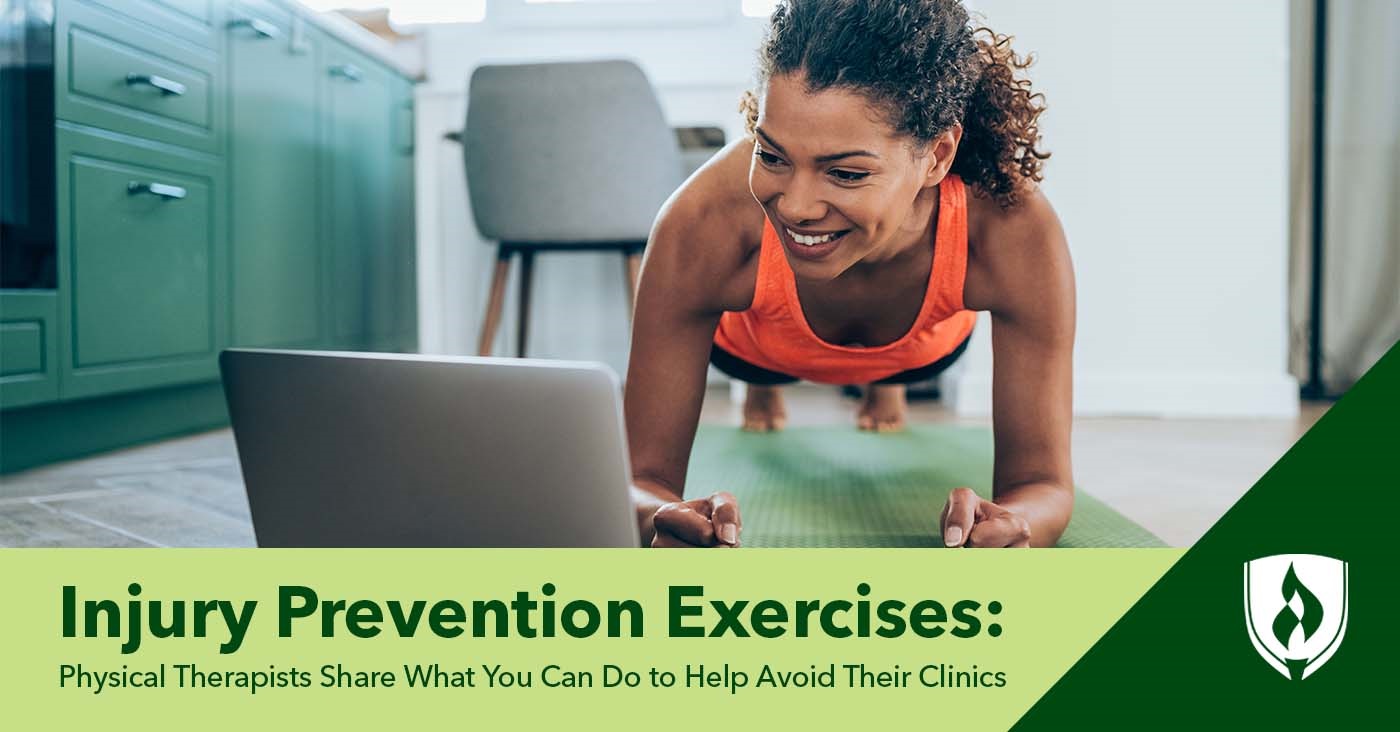Injury Prevention Exercises: Physical Therapists Share What You Can Do to Help Avoid Their Clinics
By Carrie Mesrobian on 01/17/2022

No matter your level of physical fitness or your athletic ambitions, it’s only natural to want to avoid injury as much as you can. But this is easier said than done. Whether you’re hunched over at your desk or working on your feet all day, it doesn’t matter: injury can happen, and mental and emotional stress can make it worse.
But an ounce of prevention is worth a pound of cure, as the saying goes. While no magic cure-all guarantees a pain-free future for your knees, hips, shoulders, back and other common problem areas, there are certainly things you can do to help keep these issues in check.
For the inside scoop on what works, who’s better to ask than the physical therapy professionals guiding patients through rehabilitation on a daily basis? In this article, we turn to physical therapists to share some of the exercises they assign to their own patients to help protect and strengthen their patients’ bodies.
Please note that the information provided in this article should never be used as a substitute for medical advice from your own physician. There are too many variables to account for here for a one-size-fits-all article, so please consult with a physician before trying any of these techniques.
Protecting your back
Whether you’re taking part in sports, working outdoors or hunching over a desk, back pain is a common problem that you’ll want to avoid. Your back contains a grouping of muscles that are easily engaged in everyday life—and that becomes very apparent when something goes wrong. Fortunately, there are preventative steps you can take.
“When it comes to back pain, prevention and preparation can do wonders,” says Dr. Thanu Jeyapalan, clinical director of Yorkville Sports Medicine Clinic. “I always recommend the McGill Big 3 set of exercises.”
For those not plugged into the world of physical therapy, the “McGill Big 3” is a series of exercises developed by Dr. Stuart M. McGill, a professor emeritus of Spine Biomechanics at the University of Waterloo. “These are three simple exercises: the Partial Curl Up, the Bird Dog and the Side Plank. Performing these exercises regularly will proof your lower back and significantly lower your chances of developing non-traumatic back pain.”
All of the McGill Big 3 exercises can be done at home, with nothing other than a mat or supportive surface.
Strengthening your core and spine
Buhrow gives all her patients core exercises.
“These are so important to have stability in your core to allow for good, full-body movement,” Buhrow says. “The core helps protect the back and gives better posture for correct neck positioning as well. It keeps the center of the body stable so other muscles in the limbs don’t have to work as stability muscles at the same time they are doing the movement for mobility.”
Dr. Shaden Ghattas, founder of Universus Physical Therapy, says that keeping the spine healthy and mobile is a great overall way to prevent injury in all parts of the body.
“Most injuries of the limbs have some sort of origin in either an unstable or rigid spine,” Ghattas explains. “The stress of daily life also creates rigidity in the spine.”
In addition to the bird dog, Ghattas also recommends the cat/cow spinal mobility exercise, which can be done at home with no equipment beyond a mat or a good supportive surface.
Stretching for overall flexibility
A tried-and-true method to prevent injury is to build up flexibility, according to Armin Ghayyur, CEO of Easy Allied Health.
“Stretching helps with flexibility that we otherwise lack in our daily routine,” Ghayyur says. While there are a wide variety of options to help with this, Ghayyur says he recommends forward lunges to patients looking to boost their flexibility and gain strength in their core muscles.
“Training your core through lunges can help tone and build lower body strength, which aids in the everyday routine,” Ghayyur says.
Keep moving
Proactively working to prevent injury is a good way to keep healthy and avoid most dramatic medical interventions in the long run. If these tips have you thinking about the possibilities in helping people achieve physical strength and health, a career in the field of physical therapy could be right for you. Our article “7 Signs You Should Consider Becoming a Physical Therapist Assistant” can shine some light on whether or not this would be a good fit.
Related Articles:




